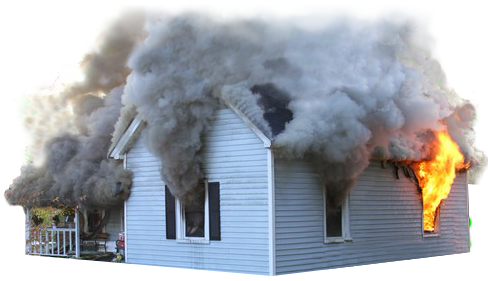Smoke Detector Program

Although we like to feel safe at home, the facts show about two-thirds of our nation’s fire deaths happen in the victim’s own home.
Smoke detectors have saved the lives of many citizens within our district. Unfortunately the absence of working smoke detectors has lead to fire victim deaths. Smoke detectors save lives by sensing smoke particles and alerting occupants to evacuate.
Ask yourself the following questions to determine your smoke detector status.
- Do I have an adequate number of smoke detectors in the correct locations?
- Are they in working order?
- Are they beyond their expiration date or more than ten years old?
- Have I changed the batteries in the last six months?
- Does my family know what to do when a detector alarms?
- Does my family know the escape plan?

The Facts
- Most residential fire deaths occur from inhaling smoke not from flame contact.
- Fire kills an estimated 4,000 Americans every year.
- An additional 30,000 people are seriously injured by fire each year.
- Most fire victims feel that fire would “never happen to them.”
- Most fatal fires occur in residential buildings between 11 p.m. and 6 a.m. when occupants are more likely to be asleep.
- More than 90 percent of fire deaths in buildings occur in residential dwellings.
- A Johns Hopkins University study, funded by the United States Fire Administration, found that 75 percent of residential
- fire deaths and 84 percent of residential fire injuries could have been prevented by smoke detectors.
Smoke Detector Tips
- Keep smoke detectors clean and free of dust
- Change batteries every six months at daylight savings time
- Test them regulary -most manufactures reccomend weekly
- Replace smoke detectors older than ten years
- Have at least one detector in every bedroom of the home,in each hallway and each level
- Place smoke detectors per the owners manual placing them up high and away from corners.
- React quickly when a detector sounds and follow your escape plan
CONTACT US
EMERGENCY
DIAL 9-1-1
FIRE - POLICE - AMBULANCE
FIRE - POLICE - AMBULANCE
BOARD MEETINGS
First and Third Mondays
5:00 PM
Station #1
2842 High Ridge Blvd
5:00 PM
Station #1
2842 High Ridge Blvd
High Ridge Fire District
© 2024 High Ridge Fire District.